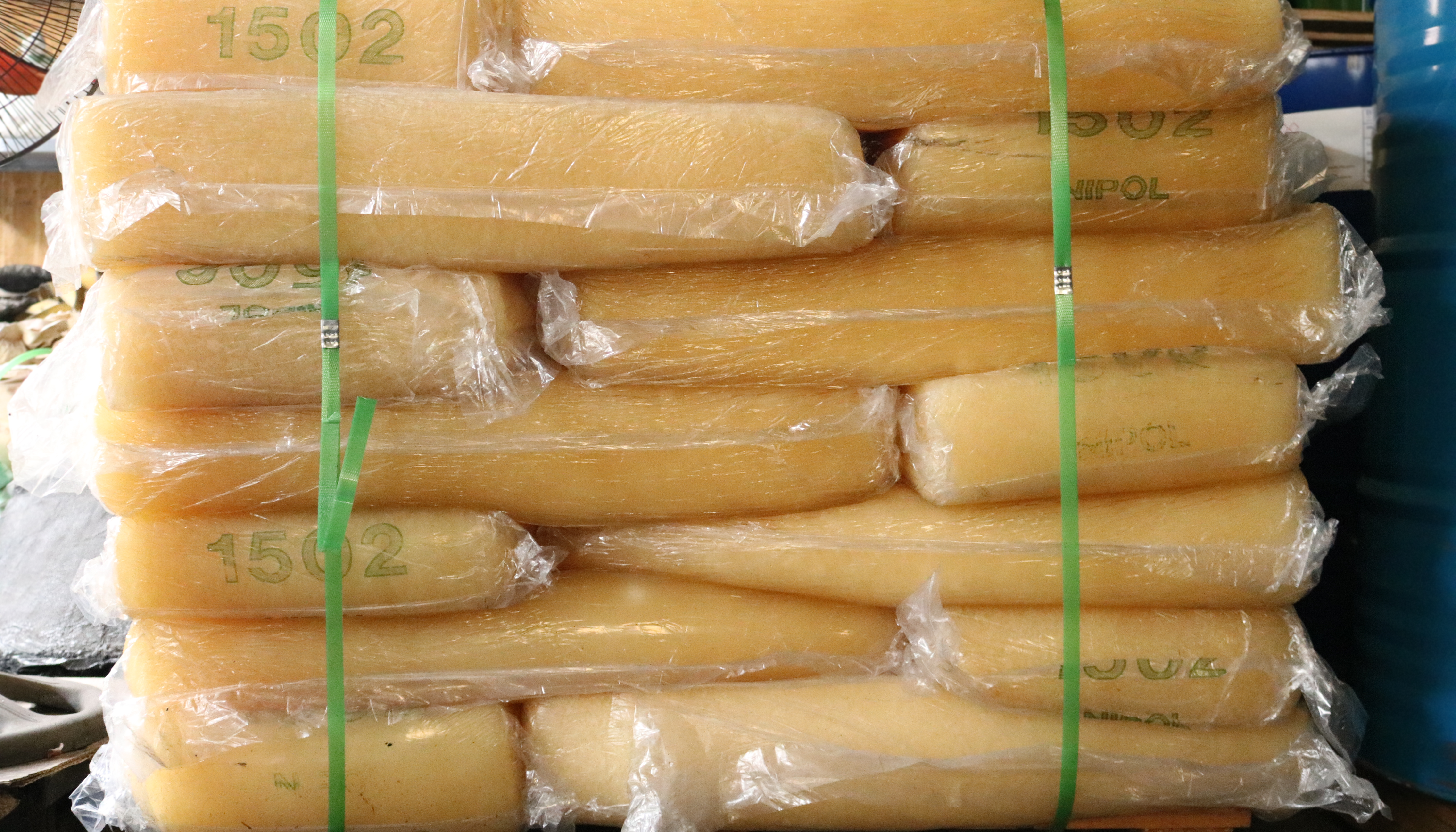
SYNTHETIC RUBBER
Synthetic rubber is a man-made plastic that functions as elastic.
PROCESSING AND CLASSIFICATION OF NATURAL RUBBER
RUBBER ACCELERATOR MBT
BLOWING AGENT FOR RUBBER AND PLASTIC
INTRODUCTION TO RUBBER ACCELERATOR MBTS (DM)
SYNTHETIC RUBBER
1. What is synthetic rubber?
Synthetic rubber is a man-made plastic that functions as elastic. A stretchy substance is a substance whose mechanical property is to withstand the pressure of changing its shape more than most other substances and yet recover its original shape. It is obtained by polymerization of single structures including Isoprene, 1,3-Butadiene, Chloroprene, and Isobutylene. This material has good elasticity, can withstand great pressure, and is becoming more and more popular in life.
2. Types of synthetic rubber.
a. Neoprene: (known as polychloroprene)
It is a family of synthetic rubbers produced by the polymerization of chloroprene. Neoprene exhibits good chemical stability and maintains flexibility over a wide temperature range.
b. Ethylene Propylene Diene Monomer (EPDM):
It is an elastomeric material, synthesized from ethylene with propylene monomers (Ethylene propylene copolymers) and sometimes with some third monomers (Ethylene propylene terpolymers).
c. Styrene-Butadiene Rubber (SBR)
It is a copolymer from butadiene and styrene. Conventional SBR contains 23.5% styrene and 76.5% butadiene. With a higher styrene content, this rubber becomes a thermoplastic, yet retains its elasticity
d. Silicone
It is an inorganic polymer consisting of silicon and oxygen, carbon, and hydrogen. Silicone rubber is widely used in industry and comes in many formulations. Silicone rubbers are usually one- or two-part polymers and may contain fillers to improve properties or reduce cost.
>> Get ADVICE on technical solutions during product construction <<

Photo: Rubber SBR 1502
3. Basic properties of synthetic rubber.
This rubber has high adhesion and outstanding cutting strength. And when in the case of strong pull on the sides, this rubber will not slide off the surface
Having better aging resistance than natural rubber, the products made from this rubber all have features such as good elasticity, high durability, and the surface of the product is very smooth, especially very safe for users
Adhesives using this material have relatively low adhesion and adhesion forces at temperatures above about 40 degrees Celsius. Lower resistance to aging compared to other ingredients. Better than natural rubber. This glue is less suitable for UV exposure but can be improved by adding a stabilizer
4. Applications of synthetic rubber.
Since the properties are similar to natural rubber but improved, this type of rubber has been applied in a number of industries such as manufacturing, construction, engineering, medical, rubber mattress production, and many other industries.
- Applications in the traffic industry such as making impact-resistant rubber, speed humps, etc.
- In the construction industry such as rubber-bridge bearings, road, and bridge expansion joints, etc.
- In the irrigation and hydropower industries such as making rubber gaskets, rubber seals, etc.
- In industries such as making rubber mats, rubber wheels, rubber roller shafts, tires, tubes, etc.
- In the medical industry, it is made into a rubber stopper, etc.
Besides the widely used synthetic rubber brands originating from Korea such as Kumho, LG, etc., our company is distributing all kinds of synthetic rubber from China, Japan, etc., with good quality, and suitable price. If you have any questions, please contact us for the best answers and support.
>>>Click for the best RUBBER INDUSTRY CHEMICALS on market at present<<<
Contact
MEGA VIETNAM
Office address: Floor 2-A2-IA20, Nam Thang Long Urban Area, Pham Van Dong Street,
Dong Ngac Ward, Bac Tu Liem District, Hanoi City, Vietnam
Email: contact@megavietnam.vn
Tel: (+84) 24 375 89089; Fax: (+84) 24 375 89 098
Website: megavietnam.vn
Hotline: 1800.577.728 Zalo: 0971.023.523





